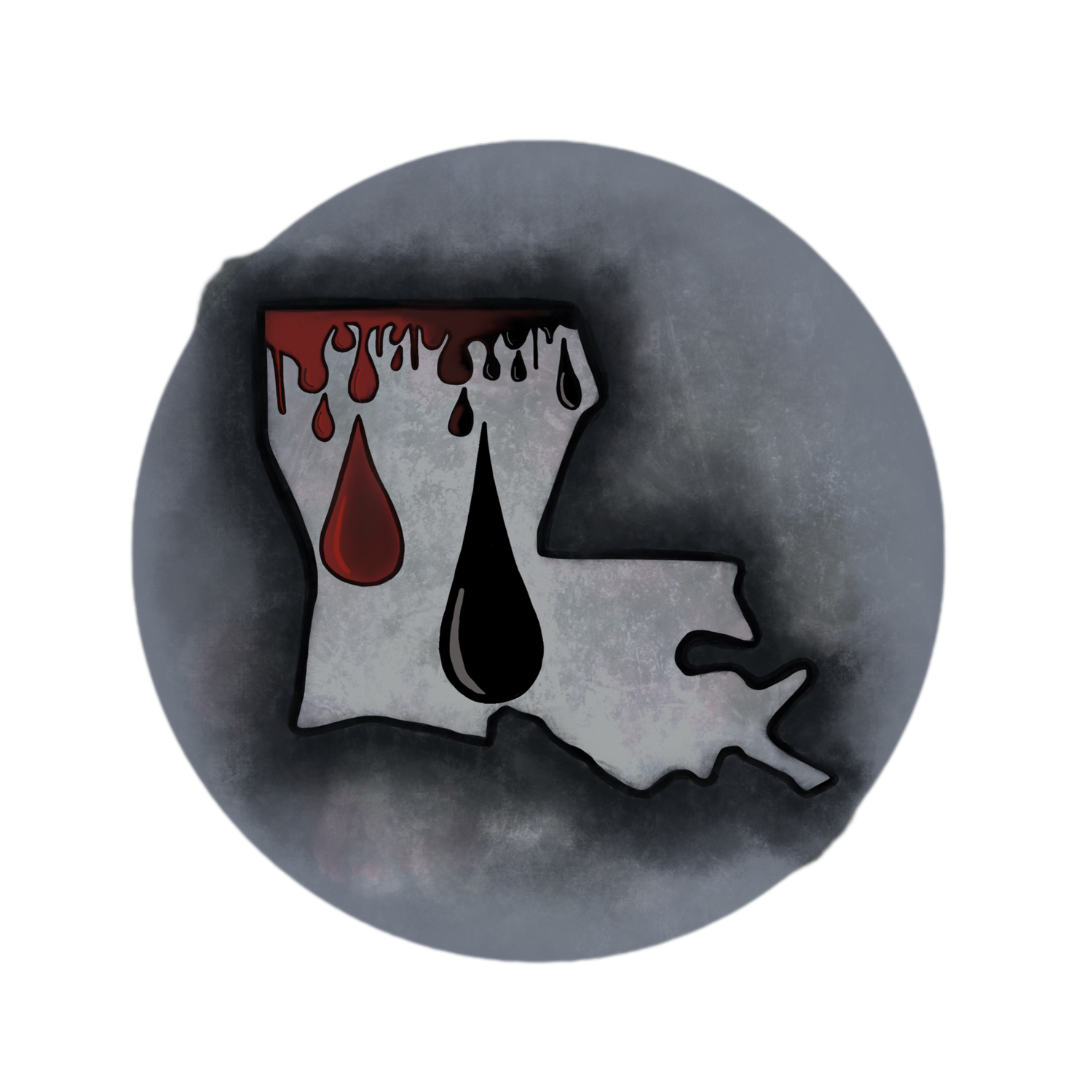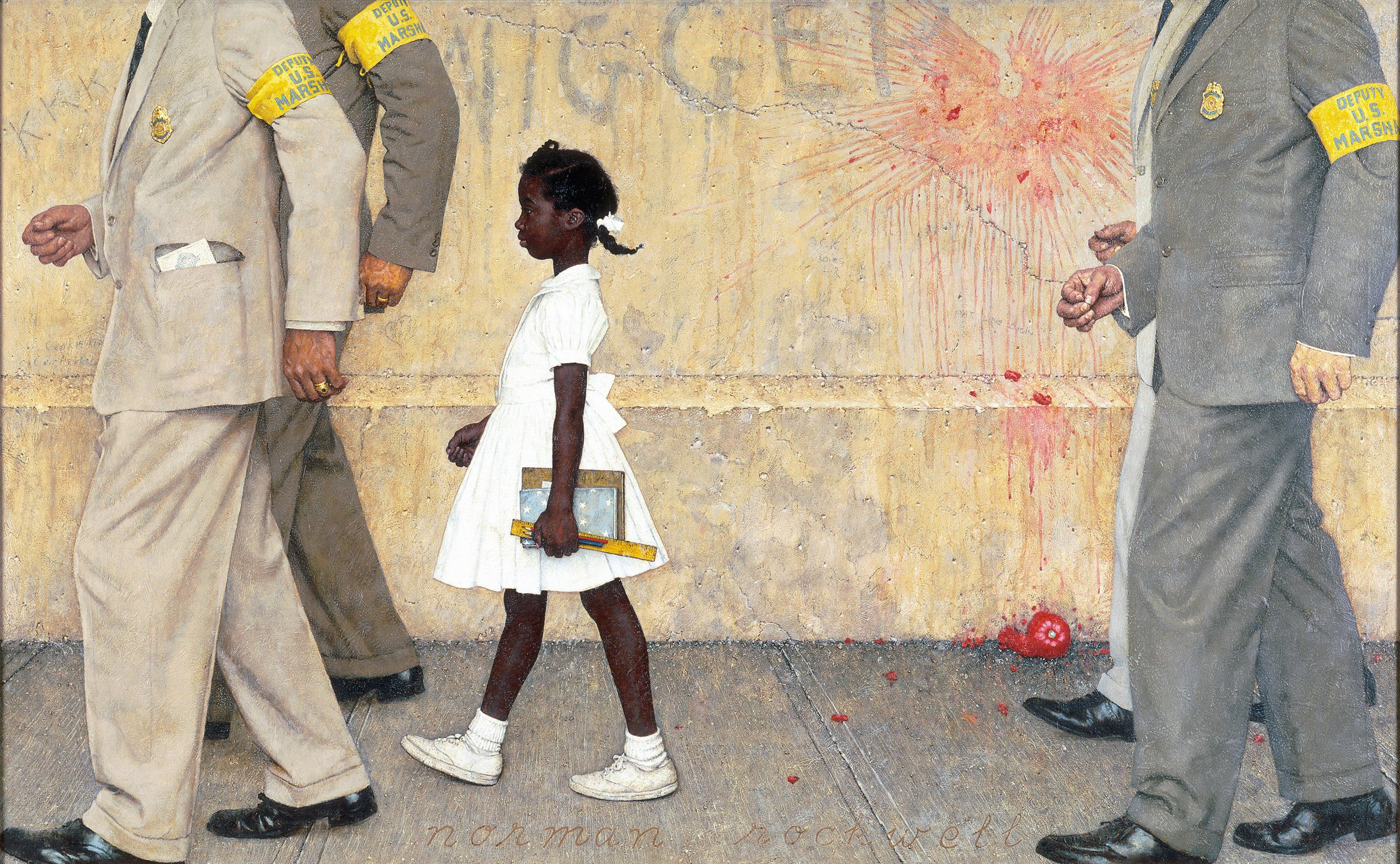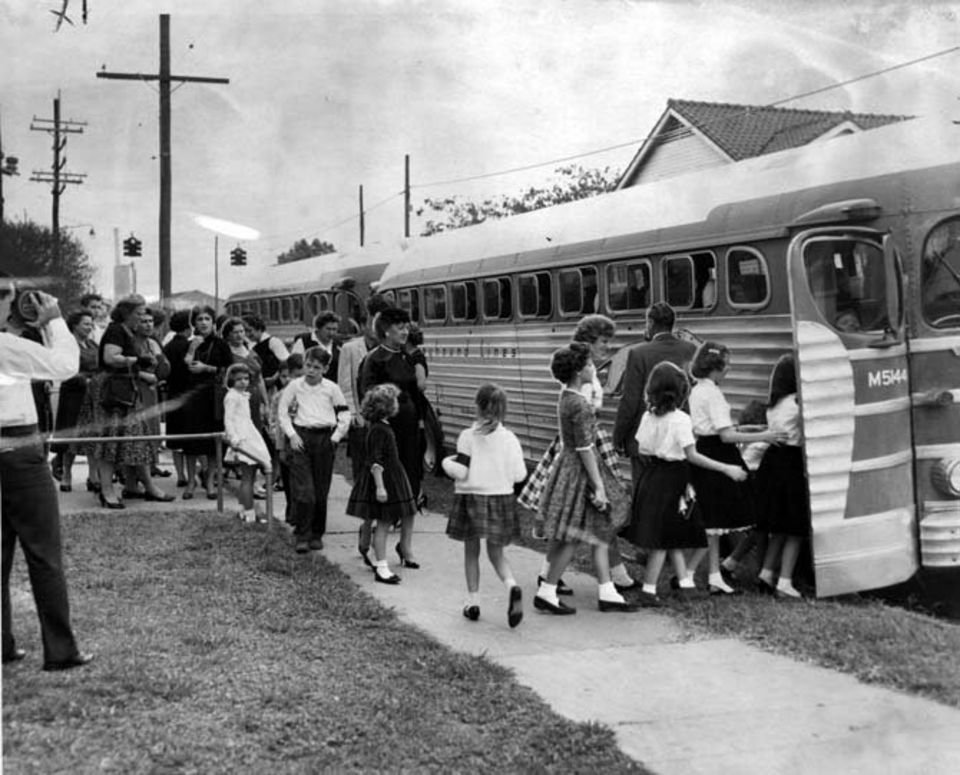
Episode 7
“Cancer Alley”
Photo from Steve Lerner’s Diamond, p. 146.
Photo by Louisiana Bucket Brigade.
In Episode 7, we talk about how this stretch of the Lower Mississippi River earned the name, “Cancer Alley,” and how locals used it as a rallying cry against the giants of the oil industry.
Resources:
Goldman Environmental Prize on YouTube: “2004 Goldman Environment Prize Ceremony: Acceptance Speech Margie Richard.” Link
Jonathan Giardina on YouTube: “Norco Shell Explosion 1988.” Link
Sky News on YouTube: “Louisiana’s ‘cancer alley’ residents vow to fight plastic plant.” Link
New York Times, “Death Toll Up to 6 in Blast.” May 6, 1988. Link
Bridge the Gulf & Darin Acosta, “Mapping the German Coast.” April 14, 2015. Link
Reid Frazier & Jared Goyette, The World, “How one woman fought one of the world’s largest oil companies - and won.” March 27, 2015. Link
New Orleans’ School Crisis & White Flight
A six-year-old Ruby Bridges exits William Frantz Elementary School, flanked by four U.S. Marshalls, in November of 1960.
Uncredited Dept of Justice photographer, Wikimedia Commons.
Norman Rockwell’s The Problem We All Live With, 1963.
Rockwell, inspired by the image above, painted this biting social commentary on New Orleans’ School Crisis and the resistance to Civil Rights at large. His work forces the viewer into the perspective of white protesters, encouraging us all to consider “the problem we live with,” and the problem we perpetuate.
Oil on canvas, 36 x 58 inches. First published as an illustration for LOOK magazine, January 14, 1964. Norman Rockwell Museum Collections. Kennedy Center article
Opelousas Daily World. November 29, 1960.
For the first few weeks following William Frantz Elementary School’s integration, white mothers kept their children out of school. Things got violent between whites as Rev. Andrew Foreman walked his granddaughter Pamela to school one morning.
White mothers scream insults and threaten to kill six-year-olds during the New Orleans School Crisis. November 18, 1960.
Bettmann, Getty Images.
Mass-transfer buses send white students to nearby Bernard Parish for segregated schooling. White flight began immediately in response to Orleans Parish’s gradual integration of their public schools. When busing became unfeasible, white families packed up their homes and moved to the suburbs.
The Advocate. November 23, 1960.
Leona Tate’s Story
Leona Tate was one of the “New Orleans Four,” the four first-grade girls chosen by Orleans Parish to integrate their public schools in November 1960.
Listen to her story, part of the NOLA Resistance Oral History Project.
From The Historic New Orleans Collection website:
“In November of 1960, six years after the US Supreme Court’s ruling in Brown v. Board of Education found segregation by race in public education to be unconstitutional, New Orleans’s public schools began the process of integration. That fall, four young girls—Leona Tate, Tessie Prevost, Gail Etienne, and Ruby Bridges—integrated two elementary schools in the Ninth Ward, McDonogh 19 and William Frantz.” HNOC website
Environmental (In)Justice in Cancer Alley
Norco from the [polluted] air
Norco, short for the New Orleans Refining Company, was first founded as a company town in 1916.
Now, it’s known as the center of Louisiana’s Cancer Alley.
The Allegheny Front’s aerial footage of the Shell Norco Chemical Plant.
Inside cover art, Steve Lerner’s Diamond (2005)
A hand-drawn map from the late 1990s shows what the Diamond neighborhood looked like before their successful relocation campaign.
The “Gaspard Line” is the historic geographic barrier between the white town of Norco and the Black neighborhood of Diamond.
Diamond & Norco, 2022 Google Maps
The once full neighborhood of Diamond is now only a handful of houses, thanks to the Concerned Citizens of Norco’s successful campaign against Shell for relocation funds.
The neighborhood park may be gone, but the baseball diamonds are still clearly visible.
Also, notice the blue tarps on most of the roofs from Hurricane Ida (2021)
BASF Lockout 1984-1989
Frank Swoboda, “5 ½-Year Labor Lockout Ends.”
The Washington Post. December 16, 1989. Read archived article online.
Richard Leonard & Zach Nauth, “Beating BASF: OCAW Beats Union-Buster.”
Labor Research Review 16: Organizing for Health and Safety. (January 1990): 34-49. Read online for free
Photo of OCAW billboard during BASF lockout. “IS BASF CHEMICALS THE GATEWAY TO CANCER ALLEY? RESIDENTS & LOCKED OUT BASF WORKERS DEMAND INDUSTRIAL ACCOUNTABILITY.”Leonard & Nauth, p. 391988 Explosion at Shell Norco
From searching for the seventh victim, to window repairs, to the stages of grief… WAFB interviewed white residents for their coverage of the incident.
Channel 9 WAFB Baton Rouge
Local news covered the deadly 1988 Shell explosion in the days following the disaster, as Norco and Diamond began to grieve and demand justice.
The Diamond Story
The Daily World. July 7, 2002.Lerner, p. 145Margie Richard Wins the 2004 Goldman Environment Prize
“Because I believe in a creative order, careful consideration must be given to issues such as climate change, waste disposal, ozone depletion, population explosion, and world hunger. … To monopolize the Earth for selfish greed or gain is against humanity. … Love has no race, no color, no nationality, and no creed.”
Steve Lerner, Diamond: A Struggle for Environmental Justice in Louisiana’s Chemical Corridor. MIT Press, 2005.
For Singer’s work on the lived experiences of Black men in Cancer Alley:
Merrill Singer, “Down Cancer Alley: The Lived Experience of Health and Environmental Suffering in Louisiana’s Chemical Corridor.” Medical Anthropology Quarterly 25, No. 2. (June 2011): 141-163. Read on JSTOR
For more on New Orleans’ School Crisis of the 1960s:
Kim Lacy Rogers, “Desegregating New Orleans’ Schools,” in Righteous Lives: Narratives of the New Orleans Civil Rights Movement. NYU Press, 1993. Buy from NYU Press
Alan Weider. “The New Orleans School Crisis of 1960: Causes and Consequences.” Phylon 48, No. 2. (2nd Qtr, 1987): 122-131. Read on JSTOR
For more on the collaboration between environmental and labor organizations:
Thomas Estabrook, Charles Levenstein, and John Wooding. Labor-Environmental Coalitions : Lessons from a Louisiana Petrochemical Region. Amityville: Taylor & Francis Group, 2005. Accessed February 25, 2022. ProQuest Ebook Central. Buy from Barnes & Noble












